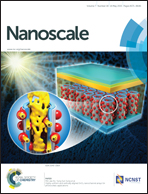Reducing bacteria and macrophage density on nanophase hydroxyapatite coated onto titanium surfaces without releasing pharmaceutical agents
Abstract
Reducing bacterial density on titanium implant surfaces has been a major concern because of the increasing number of nosocomial infections. Controlling the inflammatory response post implantation has also been an important issue for medical devices due to the detrimental effects of chronic inflammation on device performance. It has recently been demonstrated that manipulating medical device surface properties including chemistry, roughness and wettability can control both infection and inflammation. Here, we synthesized nanophase (that is, materials with one dimension in the nanoscale) hydroxyapatite coatings on titanium to reduce bacterial adhesion and inflammatory responses (as measured by macrophage functions) and compared such results to bare titanium and plasma sprayed hydroxyapatite titanium coated surfaces used clinically today. This approach is a pharmaceutical-free approach to inhibit infection and inflammation due to the detrimental side effects of any drug released in the body. Here, nanophase hydroxyapatite was synthesized in sizes ranging from 110–170 nm and was subsequently coated onto titanium samples using electrophoretic deposition. Results indicated that smaller nanoscale hydroxyapatite features on titanium surfaces alone decreased bacterial attachment in the presence of gram negative (P. aeruginosa), gram positive (S. aureus) and ampicillin resistant gram-negative (E. coli) bacteria as well as were able to control inflammatory responses; properties which should lead to their further investigation for improved medical applications.


 Please wait while we load your content...
Please wait while we load your content...